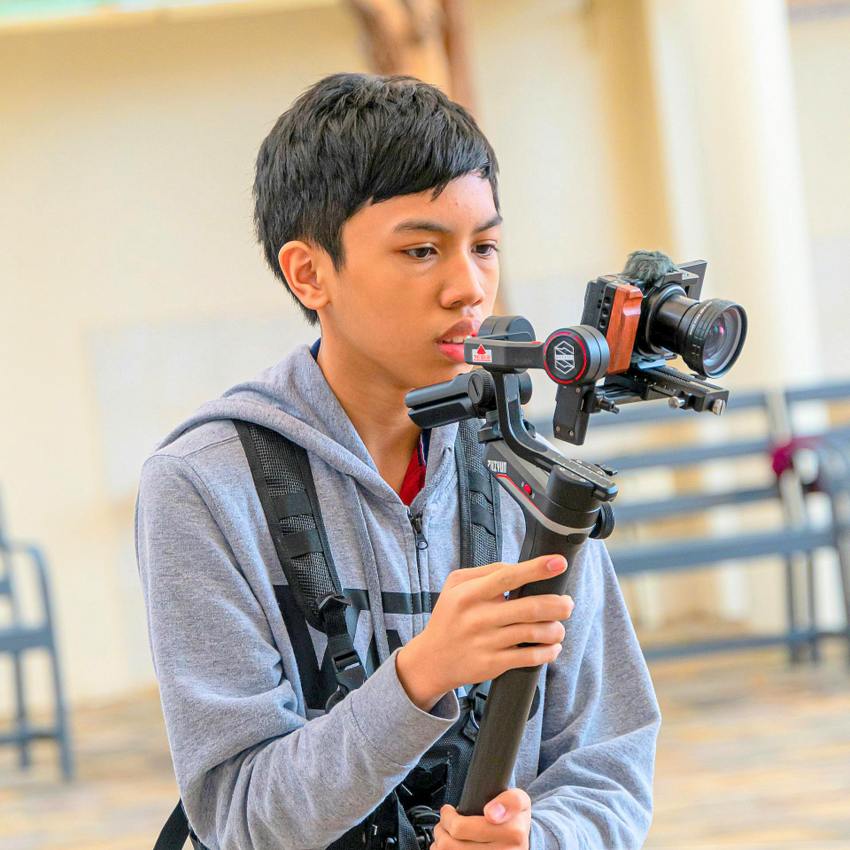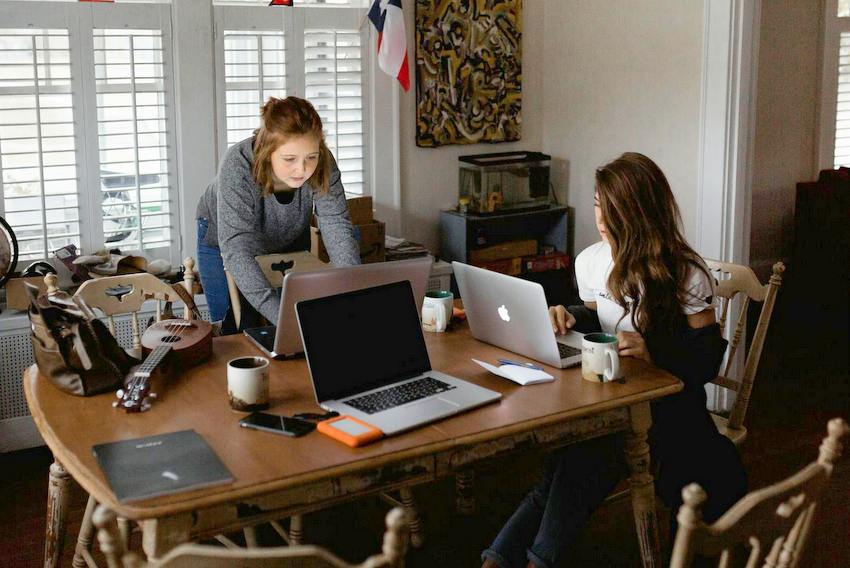
Oladapo — October 10, 2024
It is no easy job for wannabe filmmakers to build a portfolio that can help them get into highly competitive film schools. The portfolio, aside from capturing the technical skills, should also demonstrate creativity, storytelling and vision. One of the best ways for students to build their portfolio is to make their own indie films. Independent filmmaking allows students to tell their own stories, practice their craft, and create a sample of work that represents their potential as a filmmaker. Students can use indie movie making to build a compelling portfolio for film school, while platforms like Academized essay writing platform can help them stay on top of their academic essays. Academized.com is an essay writing service that ensures that students can balance their creative projects with their academic responsibilities
This post will explore how indie filmmaking can help your student to create the kind of portfolio – plus ‘extras’ – to catch the attention of admissions officers and set them on a path to the film career of their dreams.
The Importance of Creativity in Indie Movie-Making
There’s something intrinsically liberating about indie movie-making; every time you complete an indie film, you have wide-open artistic horizons, compared with the strict guidelines that many studio productions adhere to. Indie movies can convey out-of-the-box concepts, hallucinatory journeys, unconventional storylines, and even explore unconventionally personal themes. In the course of crafting a film school portfolio, the more original the better. Admission committees are looking for applicants who are as much thinkers as they are doers; who can transcend the school environment and bring creative freshness to the industry.
For students, this means indie filmmaking is the perfect space for them to flex their creative voice. They can develop a unique story idea, take an existing genre and spin it on its head, or explore unusual cinematography techniques – something they couldn’t do with a project based on a story they didn’t write, and thus already in the hands of someone else.

Developing Technical Skills Through Indie Filmmaking
Making an indie film is both a creative process and a technical one. Students who make indie films might be directing, producing, writing and editing all at once. This hands-on approach is also very helpful in building a portfolio. Indie films allow a student to have control over every aspect of the production, from the camera work, to the lighting, to the sound, to the editing software, to even special effects.
These technical skills are the meat and potatoes of any film school portfolio. Admissions officers are not looking just for creative thinkers. They also want applicants who can demonstrate mastery of the technical aspects of filmmaking. It is one thing to have ideas, but quite another to pull them off. When students make indie films, they demonstrate that they can oversee all stages of production, from pre- to post-production. It speaks volumes when, from conception to completion, someone is in control.
Using Indie Films to Showcase Storytelling
Students can enhance their film school portfolios through indie movie making, while using online research paper services to handle academic tasks, allowing more time for creative pursuits. Most of all, an indispensable part of a school showreel is an interesting story. All good films tell an interesting story. Indie movie-making does not demand commercial constraints. Students can be free to develop their skills as storytellers. They can experiment with character, pacing and emotional detail.
What film schools are actually seeking are students who intuitively grasp the importance of storytelling. Whether it’s a mini movie, documentary or an experimental piece with narration, the ability to communicate a clear and engaging storyline will be the prerequisite to a successful portfolio. No other form of indie movie-making enables students to learn to craft a narrative and develop emotional arcs while experimenting with structure.

Collaborating with Others in Indie Filmmaking
While students in indie film classes might tackle many tasks independently, collaboration is also foregrounded. Collaboration requires students to work together with others, whether actor-students, classmates, or local community actors, to develop their communication skills and the ability to function on a team. Indeed, acting and filmmaking are inherently collaborative arts. Every film is a product of many people working together to collectively bring a shared vision to life.
Students can showcase their teamwork skills through their portfolio. Indie movies provide the opportunity to work with others – to be able to communicate one’s vision, to direct actors and to contribute to a team setting. Film schools also seek out students who can be a part of a group setting since filmmaking is rarely done solo. Indie movie-making teaches students how to work in teams and to lead, which will contribute to a strong portfolio.
| Element | Description | Importance for Film School |
| Originality | Creating unique and personal films that showcase creativity and distinct voice. | Film schools look for students who bring fresh perspectives and artistic expression. |
| Technical Skills | Demonstrating proficiency in camera work, lighting, sound, and editing. | Technical competence is critical for success in film school and the filmmaking industry. |
| Storytelling | Crafting compelling narratives with strong character development and pacing. | Storytelling is at the core of filmmaking, and film schools value strong narrative skills. |
| Collaboration | Working effectively with others, whether directing actors or collaborating with a production team. | Teamwork is essential in filmmaking, and the ability to collaborate is highly valued. |
| Vision & Leadership | Taking on leadership roles in film projects and showcasing a clear directorial vision. | Film schools seek students who can lead projects and bring a cohesive vision to life. |
Building a Body of Work Through Indie Films
Now here is one of the biggest perks of DIY film-making: your portfolio. Students will not send in one film, but several short films, or one feature, and this is very important because film schools look out for more than just a fresh face to stick in front of their cameras. They are looking for versatility. A varied portfolio, with different genres, themes and styles, shows off all of your different skill sets, which in turn, is another one of the key characteristics film schools look for as well.
Students could make a drama, comedy or documentary film to demonstrate that they are capable of telling more than one type of story; and that they are also capable of adapting their filmmaking style to fit different formats and purposes. Finally, students can use indie filmmaking to experiment with formal visual storytelling techniques such as cinematography and editing by using them to create different moods and tones.

Submitting Short Films and Web Series as Part of the Portfolio
If the short form is chosen, students don’t have to restrict themselves to the old-fashioned short. A web episodic could be an option now that television has grown in the age of binge-watching and streaming platforms, allowing students to demonstrate mastery of character and story over longer periods. A web series, where the students have a chance to show steady discipline of storytelling, might be a good idea, if there’s mastery of the short narrative released episodically.
Short films work well in this arena because they are able to tell a conclusive story in a short amount of time. Film school portfolios have limited time and short films allow students to present their work in a format that abides by these time restraints. Short films and web series are a great way for students to showcase what they do well as filmmakers.
The Role of Budget in Indie Filmmaking
Another key feature of indie films today is that they tend to have small budgets. This can be a difficulty for student filmmakers, but it can also be an opportunity. Working on a small or no budget encourages students to think creatively and to use what is available to them. This could mean seeking out locations for free, pottering around in the garden to find something to use as a camera dolly, or simply chatting to friends and family to see if anyone would like to appear in the film.
Film-school admissions officers will always have a soft spot for applicants who can make excellent films with absolutely no money. That is key to them when a filmmaker can build a portfolio with a zero budget. It’s hard not to admire someone who could squeeze two minutes of genuine beauty from a situation that called for penny-pinching. With these challenges to overcome, shoestring filmmakers are more like situations in which students can demonstrate to the hiring powers-that-be that they understand what they’re getting into. They can work within constraints, and they won’t complain that they can’t make a feature film in Austin for just one dollar.
Submitting Indie Films for Festivals and Competitions
Film festivals and competitions are another way that students can start building their portfolios. They can submit their ‘indie’ films to film festivals, where they can receive honors, be recognised and network with professionals in the field, and add accolades to their portfolios. This alone can expand a student’s portfolio greatly.
Film schools notice students whose work has been screened at festivals. Festivals act as a vote of confidence that the student’s work is noteworthy enough to have been considered by the professionals who are screening films. Festivals also allow students to get feedback on their work, which can help hone existing skills and create even stronger creations for their portfolios.
Conclusion: Indie Movie-Making as the Path to Film School
Nothing is better suited for creating a college-application portfolio than indie movie-making: students can be imaginative, become technically proficient and hone their art of storytelling in a medium that offers freedom and fluidity, and they can demonstrate their ability to collaborate with others, take the lead on projects, and create films that are their own.
A portfolio that focuses on originality, technical ability, and good storytelling can build the kind of work that would impress most film school admissions officers. Meanwhile, the potential for awards through regional and national film festivals and competitions can enhance the quality of that portfolio. The kind of work students can create in indie filmmaking can give them a taste of what a film career might look like, and, with hard work and creativity, it can become their launching pad into the industry.
You can comment below or join us on Facebook, Instagram! or Twitter.
INDIE ACTIVITIES
In Camera by Naqqash Khlalid Launch on VOD April 29
Naqqash Khlalid’s Directs Nabhan Rizwan. In Camera stars an EE BAFTA Rising Star Award Nominee.
2025 Philip K. Dick Sci-Fi Film Festival Award Winners Announced
Vanessa Ly’s Memories of the Future Awarded Best PKD Feature
Dreaming of You by Jack McCafferty Debuts VOD & DVD for April Release
Freestyle Acquires “Dreaming of You” for April 15th Release
Hello Stranger by Paul Raschid set for London Games Festival & BIFFF
The film Is set for an April 10th Premiere at The Genesis Cinema in London (LGF) and BIFFF






